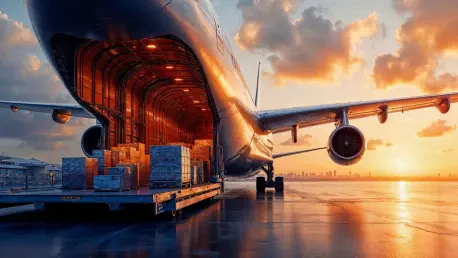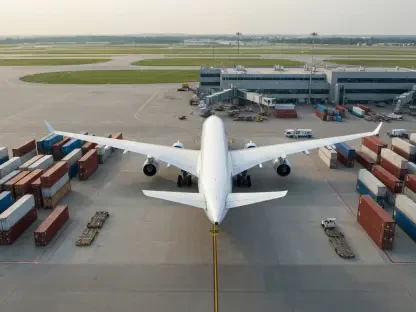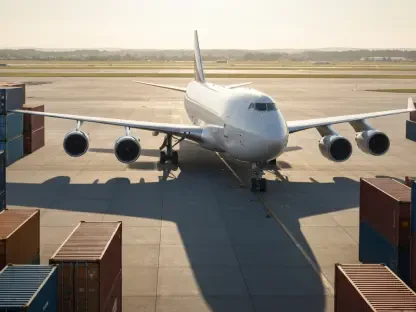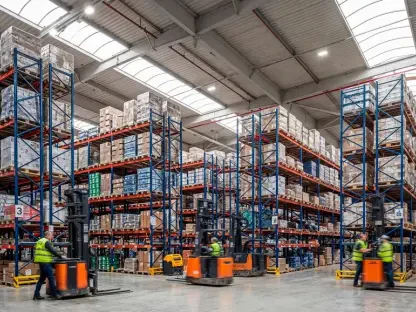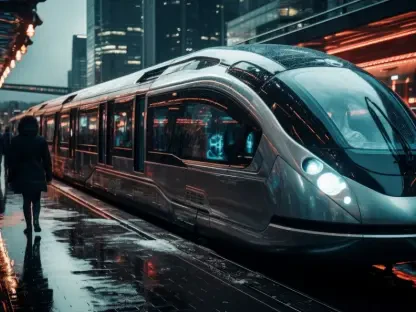The cargo industry has witnessed significant transformations over the past few years, marked by the growing demand for efficient long-range freighters. Mammoth Freighters has emerged at the forefront of this evolution with its planned completion of the first Boeing 777-300ER conversion into a cargo aircraft. This initiative, which has gathered momentum with AviaAM Leasing as the launch customer, underscores a major leap in addressing the ever-expanding freight needs globally.
Current State and Significance of the Cargo Industry
The cargo industry occupies a pivotal role in global trade, facilitating seamless movement of goods across continents. As trade dynamics shift and supply chains become increasingly intricate, the reliance on air cargo has intensified. Major players like FedEx and DHL continue to dominate, yet emerging technologies are altering traditional operations, presenting opportunities for new entrants. The industry’s adaptation to advanced tracking systems, automation, and sustainable practices further define its current landscape, while stringent regulations ensure safety and efficiency.
Trends and Dynamics in the Cargo Sector
Primary Trends Shaping the Industry
Several transformative trends are redirecting the trajectory of the cargo sector. Foremost among them is the integration of artificial intelligence and machine learning, revolutionizing logistics with predictive analytics and enhanced route planning. Concurrently, consumer preferences heighten the demand for faster deliveries and innovative logistics solutions. E-commerce’s explosive growth drives a surge in cargo volumes, fostering new market drivers and growth prospects for stakeholders.
Market Data and Growth Projections
Market performance indicators reflect a robust expansion, as cargo demands proliferate alongside technological advancements. Recent data showcases substantial annual growth rates, with projections heralding continued upward momentum. As a result, the industry is preparing for sustained future potential, underlined by significant investments in infrastructure and fleet modernization.
Challenges and Complexities in Cargo Conversions
The conversion of passenger jets into cargo aircraft is fraught with challenges, particularly concerning technology and engineering. Factors such as structural modifications and weight management are crucial considerations. Furthermore, market-driven pressures add complexity, necessitating strategic solutions like collaborative ventures and innovative adaptations to maintain competitiveness.
Regulatory Environment Impacting Cargo Conversions
Compliance within the regulatory landscape remains indispensable for successful cargo conversions. Presiding regulations dictate security measures and operational standards. Recent legislative shifts necessitate continual adaptation to meet evolving requirements, with implications for conversion timelines and project feasibility.
Future Outlook of the Cargo Industry
Anticipated advancements could redefine the cargo landscape. Emerging technologies, including blockchain and the Internet of Things (IoT), promise to disrupt traditional workflows. As consumer trends evolve, the emphasis shifts toward sustainable practices and diversification in service offerings. Prospective growth areas remain within reach for innovators poised to capitalize on these dynamic changes.
Conclusion and Recommendations
The transformation of the 777-300ER aircraft to fulfill burgeoning cargo needs projects a promising horizon for the industry. Stakeholders and investors are encouraged to align strategies with technological developments and regulatory shifts. Future growth presents substantial investment opportunities, demanding proactive engagement to harness the evolving freight landscape’s potential fully. As the industry advances, continuous innovation and adaptability remain crucial for maintaining leadership in this dynamic field.
